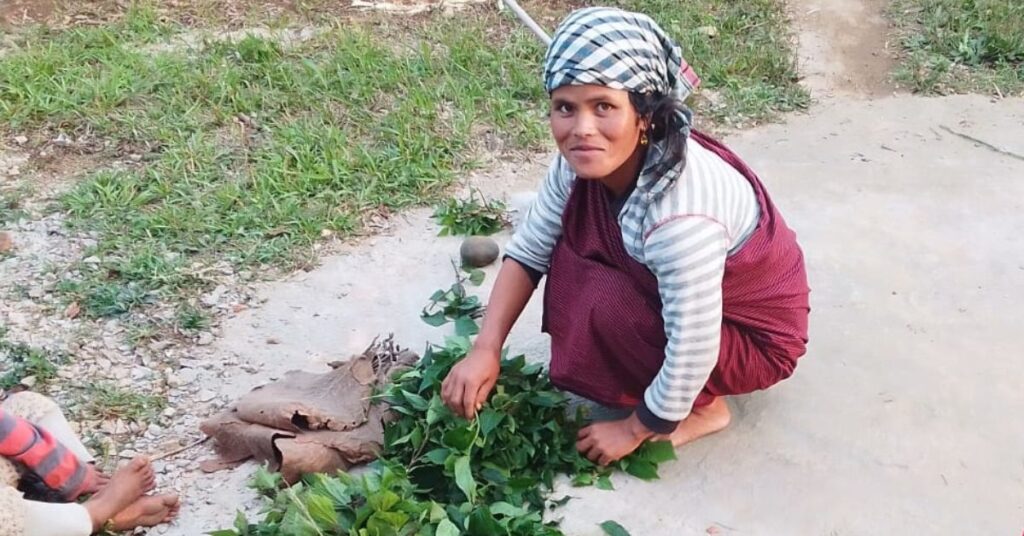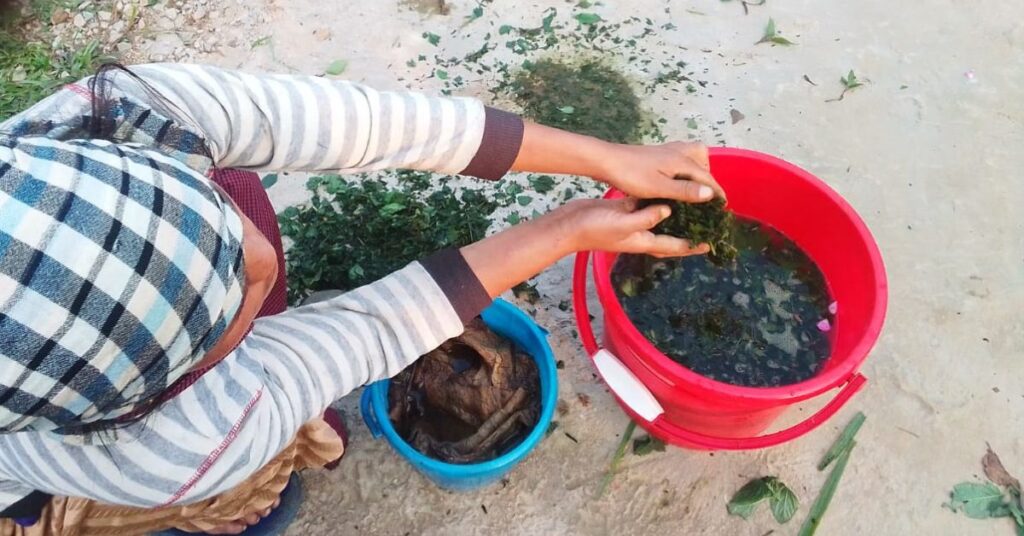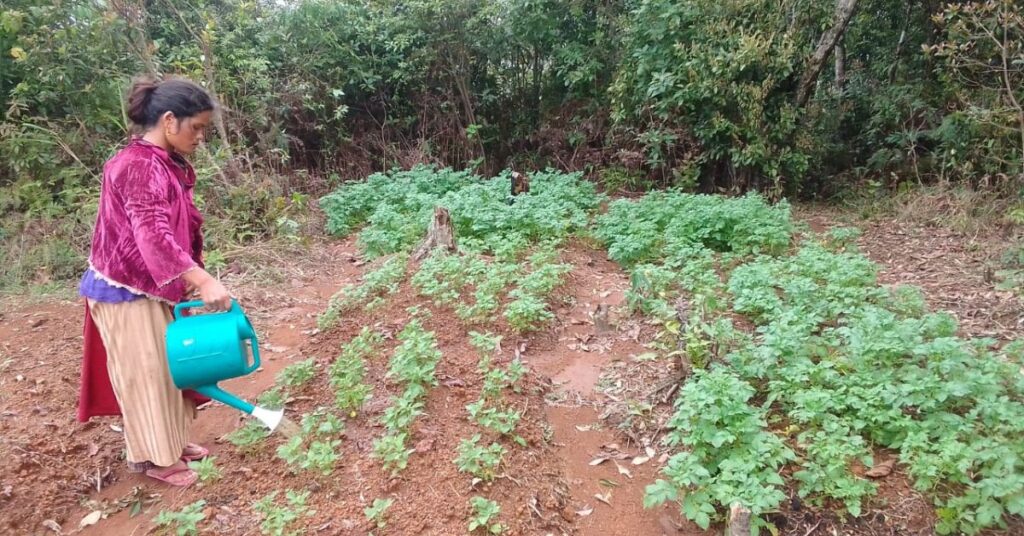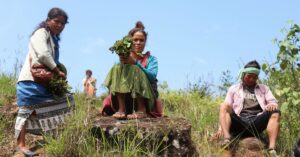In today’s day and age, almost many farmers use chemicals and fertilizers to help grow their crops and plants. However, on the other hand, a handful of farmers make use of their indigenous knowledge to come up with natural pesticides to kill pests that infect their plants.

One such farmer is 30-year-old Kong Happy Kyndait, from Shkenpyrsit (West Jaintia Hills), who came up with a natural remedy three years ago to make her own insecticides at her own farm. When she found niang byrnai (white grubs), niang iong (black beetles), khniang jyrngam (loopers) and many more pests affecting her crops, she decided that it was time to come up with a natural pesticide to do away with them at the earliest. What Kong Happy does is she mixes shyrmit rit kyndeh–Acmella oleracea (toothache plant), sla syntu la hari (Lantana) and sla duma (tobacco leaf) in water and sprays the mixture directly on the pests. After a period, she realised that her ‘experiment’ was a success and her plants which were affected by these pests were now growing extremely well. Some of the plants that these pests were infecting are maize, squash, cabbage, sweet potatoes, pumpkin, beans, taro, cucumber, mustard leaves, and many others.
Kong Happy is also a member of the Agroecology Learning Circle (ALC), including 21 others, and plays an integral part in NESFAS’ ongoing project — “Empowering indigenous communities through Agroecology Learning Circles (ALCs) for resilient, integrated and innovative natural resource management” – which is supported by the Meghalaya Basin Management Agency (MBMA) and funded by the World Bank. These ALC members work together to identify problems and solutions related to farming which they all face on a day-to-day basis.

After her successful experiment with the natural pesticide, Kong Happy has trained the other ALC members on how to make these kinds of pesticides on their own and not depend on chemicals. Kong Sina Kassar, the ALC member from Shkenpyrsit, said, “We are fortunate to be acquainted with Happy and she has been kind enough to share her technique of making this natural pesticide with the rest of us. I feel that this method is an innovative way of getting rid of all the pests without damaging our crops and the soil itself.”
Kong Happy cultivates an abundance of food crops in her garden for over five years now and has also gained the knowledge of making pesticides through her experiment which came about through her curiosity.

She said, “This will help other farmers as well once they practice and use the pesticides that have been able to help my 21 other ALC members and me. I can vouch for it too because it has proven to be successful in my garden.” She added, “This method is considered a quick, easy, and inexpensive solution for controlling and killing pests and therefore, I would like to share with all the farmers to start practising this method rather than by using chemical pesticides which damage the crops and soil health. It will help kill pests and can increase production growth.”
Kong Happy also mentioned that the benefits of making natural pesticides are they do not only help kill the pests, but even helps in making the soil fertile which has also improved the production of food crops. She hopes that she can share her method with farmers from everywhere so that there will be a cut down on the usage of chemical fertilizers and pesticides. Read below on how you can even make this easy 3-step natural pesticide in the comfort of your own home:
Components:
- Lantana
- Tobacco leaves
- Shyrmit Rit Kyndeh-Acmella oleracea (aka Toothache Plant)
Steps:
- Grind the Lantana, tobacco leaves and Shyrmit Rit Kyndeh-Acmella oleracea (Toothache Plant) together.
- Mix the grounded components with water.
- Spray the mixture on your crops from time to time.



